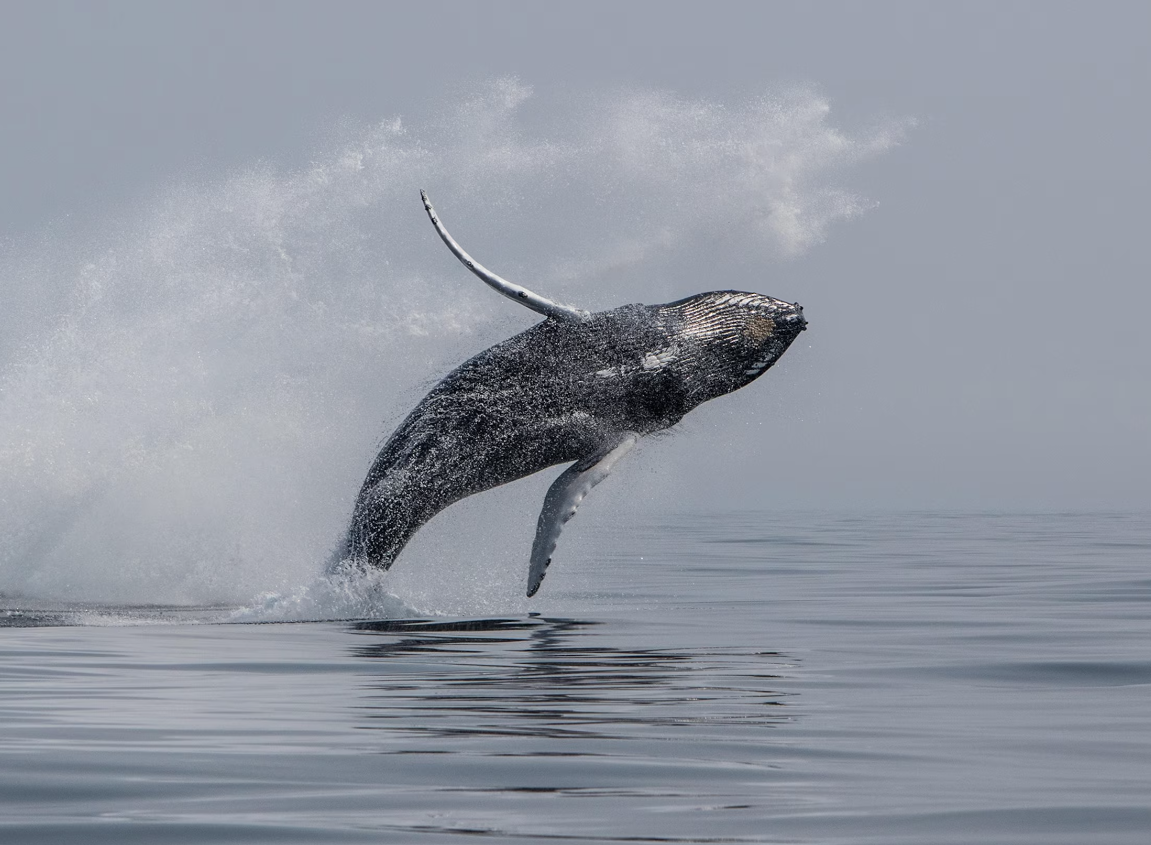When an 80,000-pound humpback whale rockets out of the depths, not much can stand in its way.
Brothers Wyatt and Colin Yager recently witnessed evidence of this off the coast of Odiorne Point in Rye, New Hampshire. They captured the shocking moment a humpback breached and then landed on the back side of a small nearby boat, capsizing the vessel. While the two people aboard were thrown into the water, neither the people nor the whale appeared to suffer any injuries.
Given that a group of orcas have been recently documented ramming and capsizing vessels off the coast of the Iberian Peninsula, the humpback incident has left some online jokingly wondering if the whales aren’t rising up in revolt.

Alisa Schulman-Janiger, a marine biologist and lead research biologist for the California Killer Whale Project, assures us that’s not the case. “This was an accident,” she says. “The whale did not attack the boat.”
It was “a collision between a whale 100 percent focused on feeding, and a fishing boat dead in the water (not making any noise),” she says. “In the video, you can see schooling fish jumping out of the water, and out of the whale’s expanded mouth.”
Why do humpbacks breach?
Humpback whales typically feed on small crustaceans, known as krill, as well as entire schools of fish, such as anchovies, cod, sand lance, and capelin. To catch fish, the marine mammals sometimes herd their prey to the surface by releasing strategic curtains of bubbles that trick the fish into believing they’re trapped and have no choice but to go up.
Then, the humpbacks shoot up to the surface with their mouths open, swallowing up schools of fish in a single gulp.
In this case, Schulman-Janiger says the humpback in question had been observed feeding on Atlantic menhaden for several days in the Piscataqua River between Maine and New Hampshire—an unusual occurrence for that area, she notes.
The Coast Guard was apparently aware of the whale, the only one of its kind in the area, and had even issued notices to mariners so that they could watch out for it, according to Dianna Schulte, co-founder and director of research for the Blue Ocean Society for Marine Conservation.
All of that said, Schulman-Janiger says the boat operators appear to have done nothing wrong. Their engine was off, and they were not trying to interact with the whale.
In areas where baitfish (small, fast-breeding species) are concentrated, “humpback whales will gladly take advantage of the easy meal and may have little regard for what is on the surface, including boats,” according to a Facebook post from the New England/Mid-Atlantic department of NOAA Fisheries, “When feeding, humpback whales can be unpredictable and active at the surface.”
How to stay safe around whales
Fortunately, even landing on a human vessel wasn’t enough to deter the humpback from feasting. Schulman-Janiger notes that reports from the scene suggested that after the encounter, the whale continued to feed for another four hours.
At the same time, NOAA advises fishers not to cast lines or troll in areas near humpbacks or visible bubble netting activity. If a bubble cloud appears while you are already fishing, the agency recommends trying to remove your lines or gear, carefully, if possible.
According to NOAA, boats should slow to 10 knots in whale hotspots to prevent collisions, allowing for both you and the whale time to react.
“A collision with a vessel or entanglement in fishing lines can cause serious injuries to the whale and sometimes be fatal. Collisions with whales have also thrown boaters from vessels and caused serious injuries and even death to people.”

